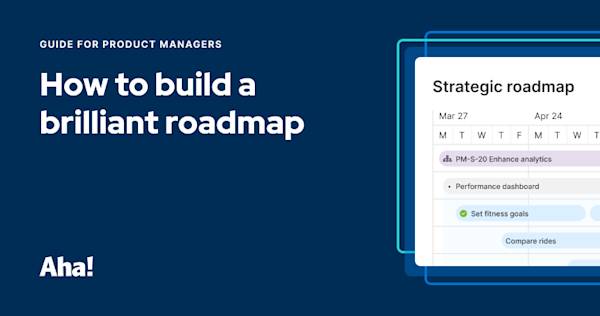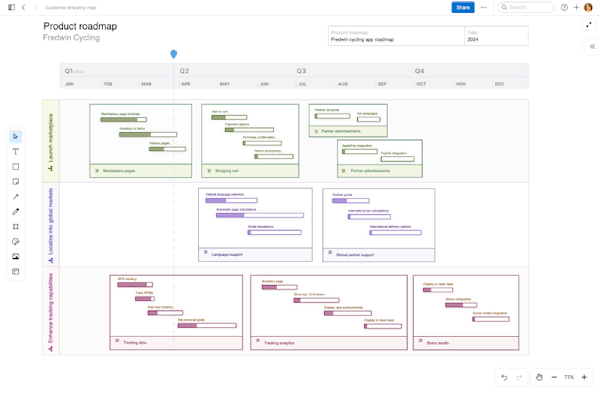What is product operations, and how does it work?
Updated: May 2025
Rudderless meetings, customer requests piling up, and outdated or disjointed tools. These situations make it difficult for product teams to deliver value at the pace and quality required. This is why some organizations choose to add a product operations manager or group to the team. Product operations, or product ops, is about facilitating communication and processes across cross-functional product teams. The term itself can describe the discipline of product operations and a specific role or team function embedded within product development teams (this guide primarily uses it to mean the latter).
Streamline product team processes in Aha! software. Start a free trial.
A more operationalized approach to product development adds tangible value for any company, especially within large technology organizations with complex product portfolios.
Building not one, but several products (and releasing new functionality often) requires numerous product management functions. Each group wants to deliver value but might do things in its own way — creating tool sprawl, misaligned workflows, and organizational chaos. Product ops aims to alleviate these issues by streamlining internal processes and establishing shared goals and best practices.
Having a dedicated product ops function is gaining traction among technology companies — the product and Customer Success teams at Aha! work closely with several organizations like this. With a clear company strategy and product vision in tow, product ops can provide an effective approach for standardizing how teams work and delivering new functionality to customers.
Curious what product ops is all about? This guide can help you get started. Use the following links to jump ahead to a specific section:
Where does product operations fit within product management?
Every company needs to address product operations. However, only some companies need a dedicated product ops manager or function. In many companies, product managers own product operations responsibilities. Product managers often see these administrative tasks, such as documenting team processes and building reports, as complementary to their strategic work.
As mentioned earlier, more large enterprises are opting to add designated product operations managers. Some claim that this is a surefire way to scale your product organization. But keep in mind that operations is not a growth function — it is an administrative function that alleviates growing pains.
Companies might consider adding a product ops team if they:
Have a complex product portfolio that requires extensive coordination across large cross-functional groups — especially ones with numerous product management positions and teams
Need dedicated personnel to oversee workflows and internal processes on a massive scale
Struggle to analyze increasing amounts of data and implement findings
In these cases, product ops folks collaborate as part of the larger product development team, helping to off-load administrative and operational work from product managers, engineers, customer success team members, and others. The main difference between product operations and product management functions is who they serve. Product operations caters to internal groups, whereas product management focuses on external end users. Product operations is rarely involved in building the product itself and instead manages behind-the-scenes infrastructure to ensure product-building teams can do their best work.
Related:
What does product operations do?
Product operations covers all aspects of product team efficiency. The details will vary because it is both an emerging job function and unique to each organization's product development process. But in most cases, product operations responsibilities commonly fall under four primary areas of focus:
Improving internal workflows
Promoting best practices
Facilitating data and analytics
Managing the product team's tech stack
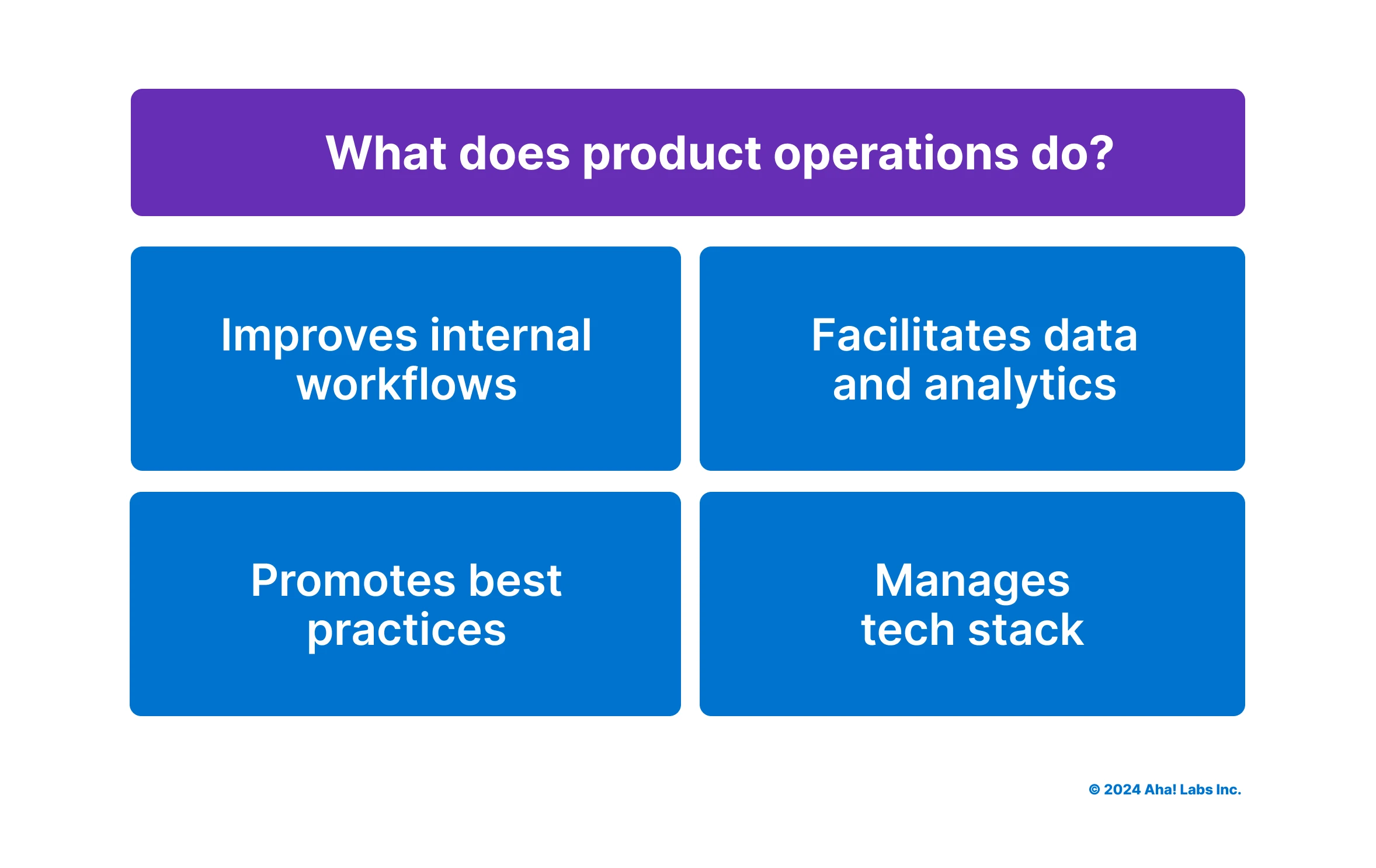
Improve internal workflows
Product operations works closely with product, engineering, and customer support teams to improve workflows — making it as seamless as possible for people to collaborate and get work done. To accomplish this, product operations managers identify areas where work breaks down and create repeatable processes to simplify daily tasks.
Here are some examples:
Meet with product, engineering, customer support, and other team leads to understand current roadblocks
Create standardized templates for things such as product requirement documents and meeting notes
Spot the root cause of bottlenecks and explore solutions to address capacity constraints
Identify ways to save time on routine tasks such as collecting user feedback and roadmapping
Promote best practices
Working with a cross-functional product group requires tight coordination to avoid chaos. This is where product operations shines by helping everyone understand how the team works best together. Product operations encourages best practices that drive alignment on how work is completed throughout product development — strengthening overall team performance.
Here are some examples:
Develop and maintain internal documentation on product team roles, responsibilities, and workflows
Audit day-to-day practices for inconsistencies, then decide on a standardized approach
Establish set procedures for requesting work from another team
Train team members on best practices, including onboarding new hires
Facilitate data and analytics
Product operations helps the product team make the most of the data it collects. This includes data on customer acquisition, retention, and feedback as well as product usage. When businesses have thousands (or even millions) of customers, this can quickly become a mass of input with minimal insight. Product operations helps bring structure and clarity to reporting on product analytics — so you can quickly spot trends that will inform product decisions.
Here are some examples:
Organize ideas portals for more straightforward feedback analysis by segment, feature type, and so on
Build a reporting dashboard that displays live data on key product metrics
Implement systems for collecting and analyzing net promoter scores from customers
Enable automated reports delivered via email notifications
Manage the product team tech stack
A product team's tech stack can include software for collaboration, idea management, roadmapping, project management, and agile development. Product operations audits each solution to ensure everyone has the tools they need — adding or consolidating when necessary — and training everyone on how to use them. Product operations folks will also set up software integrations so work can flow freely between applications.
Here are some examples:
Collect feedback from team members on technology needs and evaluate new product development software
Administer the tech stack by managing user permissions, subscriptions, and renewals
Maintain the infrastructure within software tools to accelerate adoption and usage
Troubleshoot integration issues and unify work environments
Product operations plays a vital role in maximizing the efficiency of a multifaceted organization — empowering cross-functional teams to work more closely with one another and deliver exceptional products.
Product operations roles and job titles
Product operations roles are increasing in volume and popularity. More than 49,000 folks have "product operations" in their job title on LinkedIn, and there are 2,361 job listings for product operations professionals in the United States. (In comparison, more than 4.8 million people have "product manager" in their title, and there are 8,889 product manager job listings.)
As with product management, there is more than one career path into product operations. People shift into product ops from business analysis, project management, and product management. It helps to perform a product-related function before you pursue a role in product ops so you deeply understand the processes you are meant to improve.
If you are searching for a product operations role or are considering adding some positions to your product team, here are the standard job titles you will see:
Vice president of product operations
Director of product operations
Product operations manager
Product operation specialist
Product operations analyst
Product data analyst
Product communications specialist
Process architect
Like product managers, product operations professionals solve complex problems for others. Product operations helps make the product development process as smooth and efficient as possible — so product teams can meet goals and deliver value more effectively.
It takes a great deal of effort and organization to achieve this level of operational success, but the right tools can help. A fully integrated product development suite keeps the whole product team connected in a unified software environment — so you can stay aligned as you take products from ideation to release.
Templates that support product operations
A lot goes into successfully operationalizing things like team workflows and best practices. Our library of guided templates can make your life a bit easier. Here are a few purpose-built examples that support product ops work at any stage of the product development process.
Product operations meeting template
Many of your central responsibilities, such as ongoing workflow optimizations, are discussed within recurring meetings. Use this product operations meeting template to review performance, discuss priorities, and surface potential roadblocks with the broader product team.
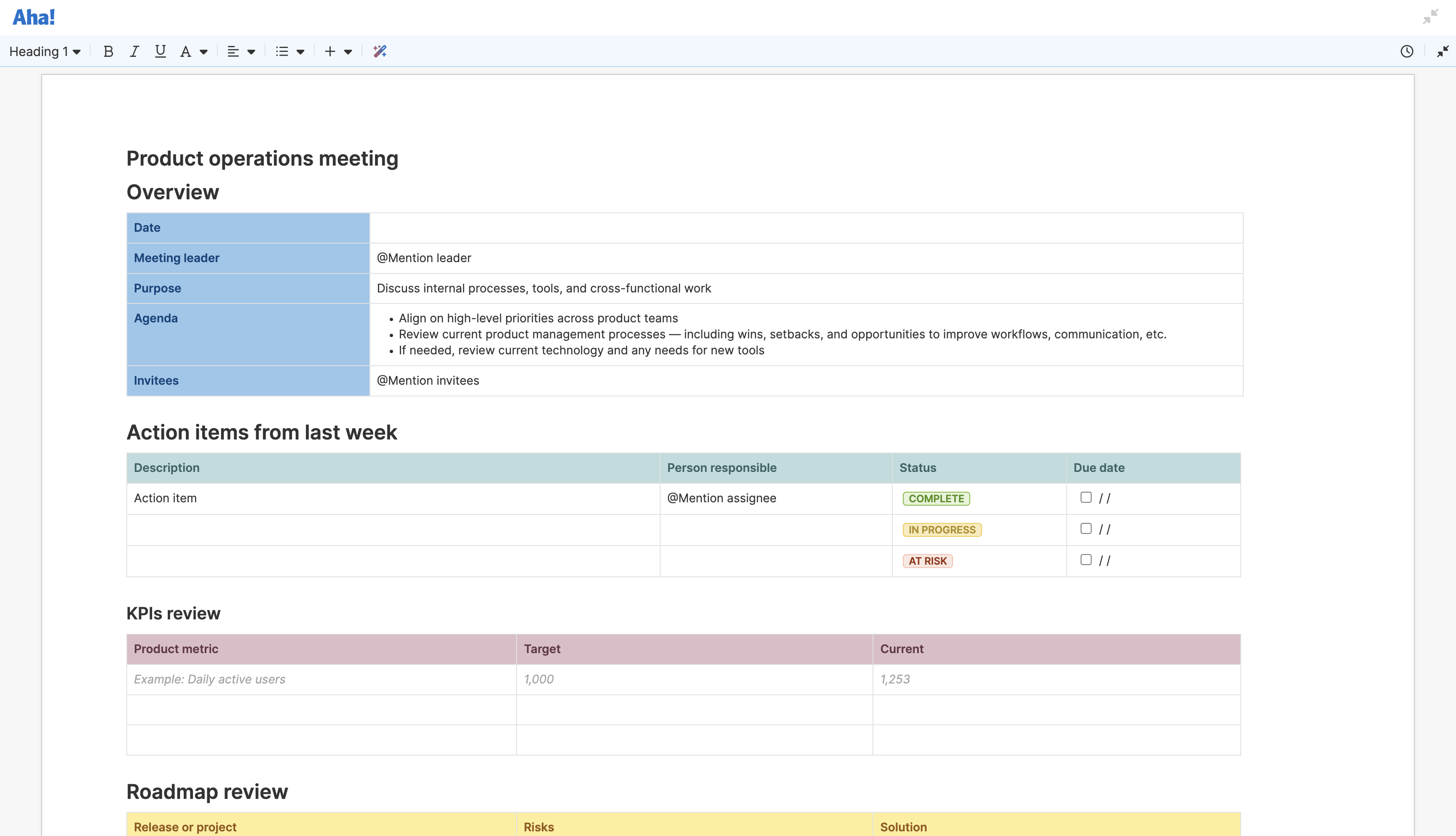
Process flow diagram template
Visualize any internal workflow in a step-by-step way using this process flow diagram. Symbols, arrows, and connectors help you map out every touchpoint of a process to identify what is working and which areas need improvement.
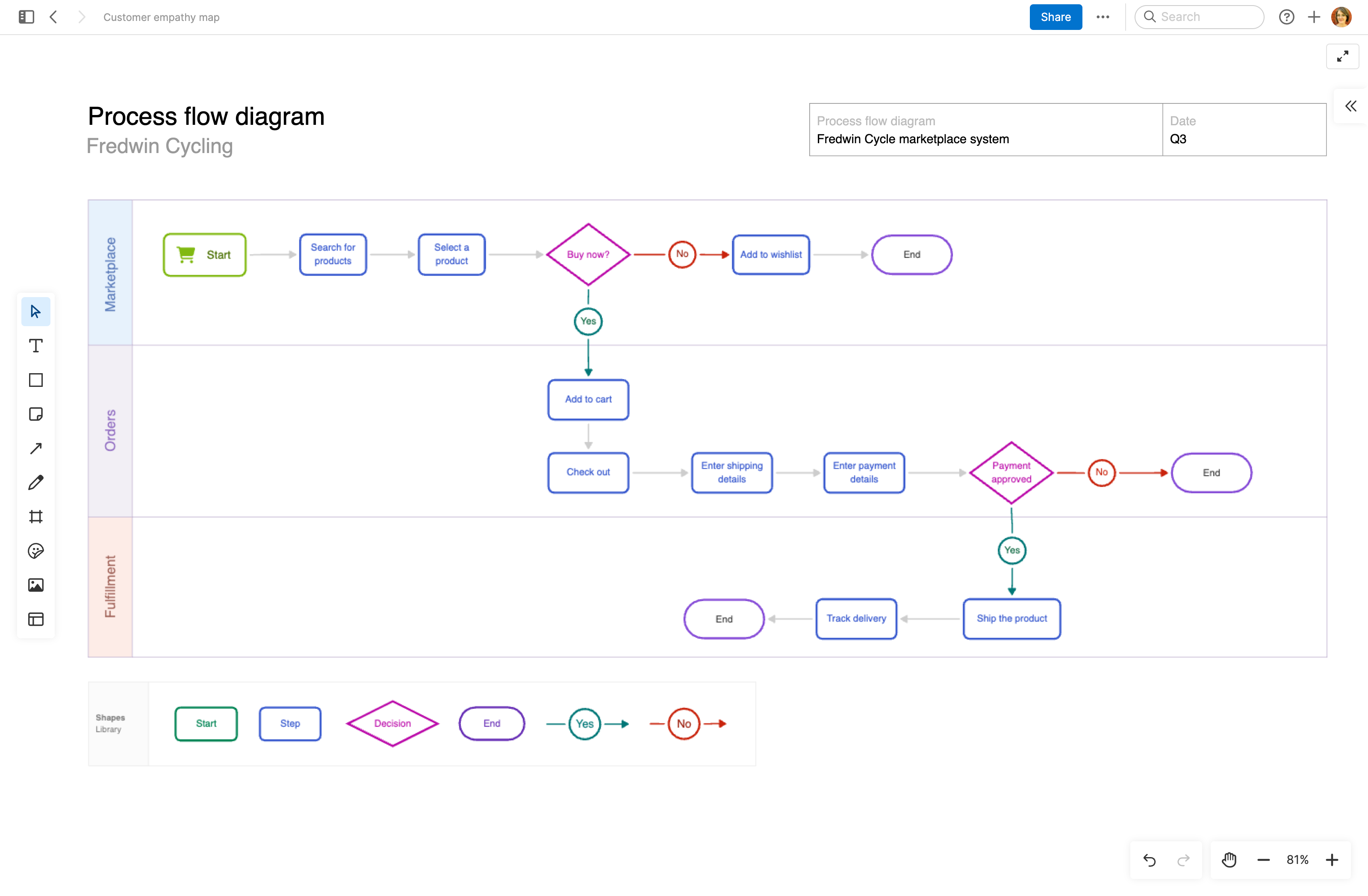
Process improvement template
Use this process improvement template as a repeatable framework for all the best practices you create. You can customize the template as work gets underway, adding tables or embedding images to clarify the adjusted workflow.
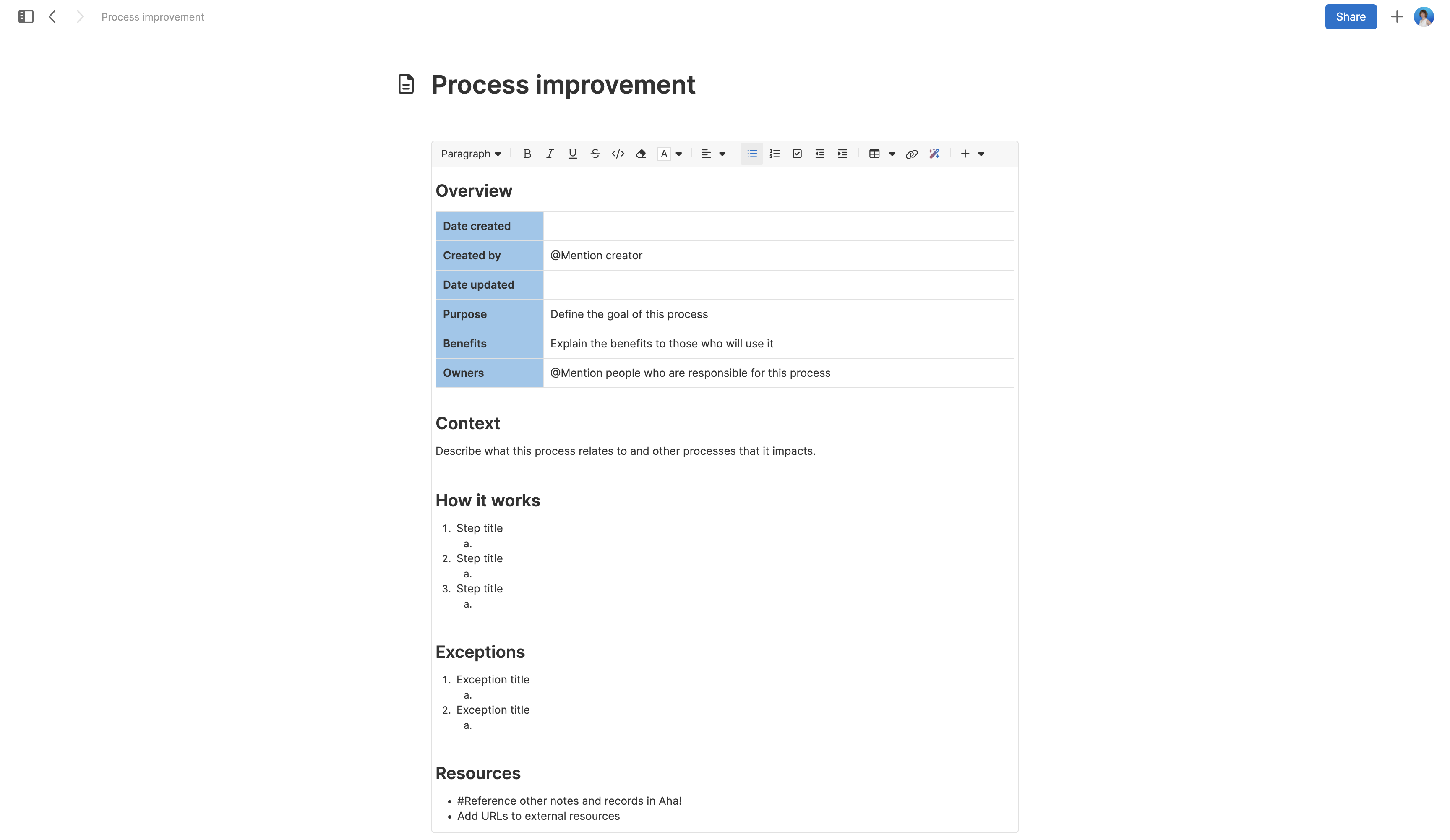
Problem framing template
Identifying and overcoming internal process challenges is a big part of product operations. This problem framing template can help you view a problem from several perspectives. Clarify the issue, its potential causes, and its impact on the team so you can align on next steps with all the information in hand.
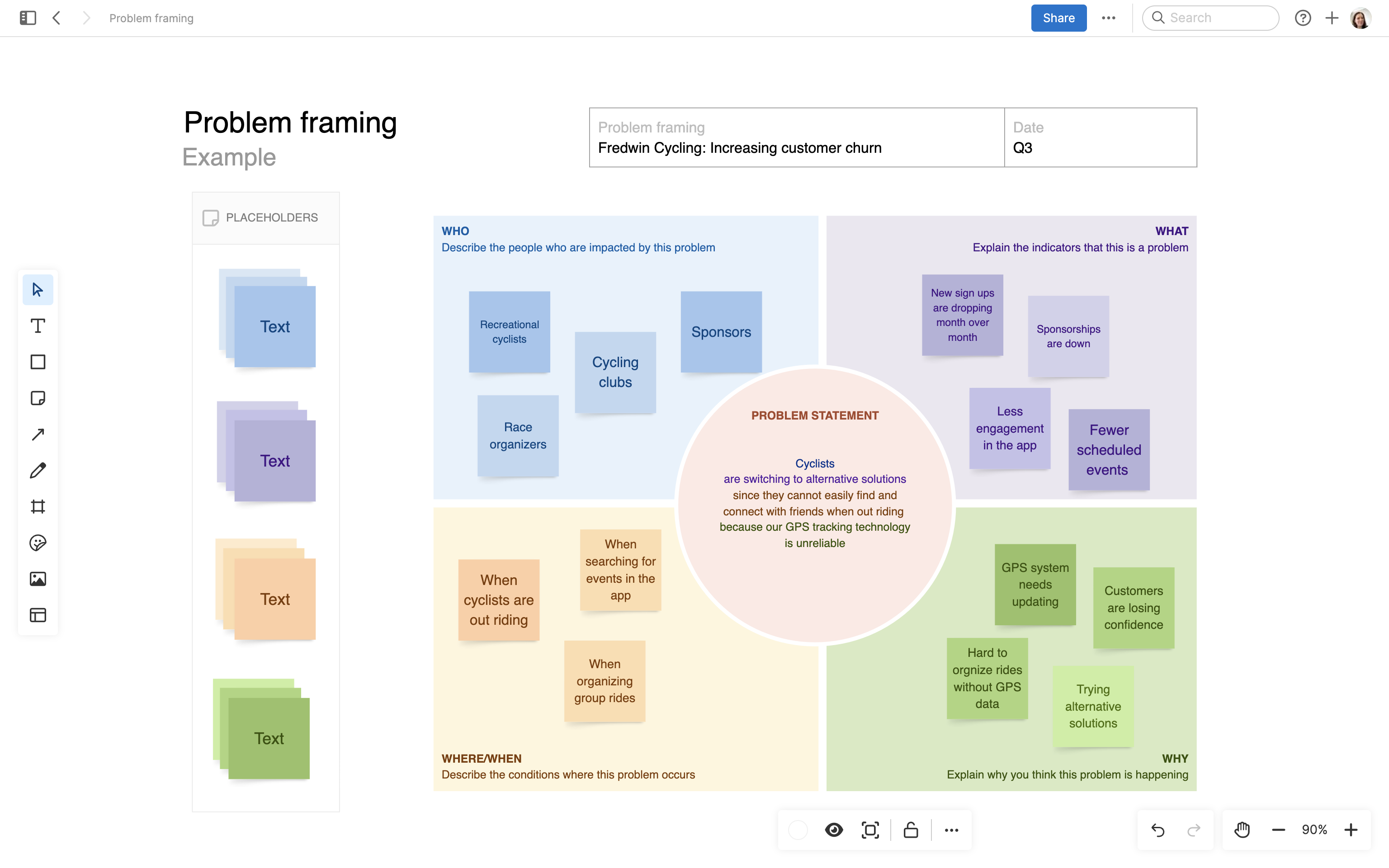
Streamlining processes and codifying how your team works best is critical to product development. No matter how you tackle product ops, the goal should remain the same: working together with purpose to build a lovable product.
FAQs about product operations
Is product operations the same as program management?
Product operations focuses on optimizing the efficiency of the product development process. Program management involves overseeing the success of specific projects or programs within the product development lifecycle. Program managers organize and monitor activities and resources related to their projects or initiatives. Product operations managers work cross-functionally to streamline workflows and build best practices.
What tools and technologies are commonly used in product operations?
Product management software (like Aha! Roadmaps) is used for roadmap planning, feature prioritization, task management. Our suite of software offerings includes internal documentation and knowledge-sharing platforms, task automation, and a way to collect and analyze internal team feedback. It also has integrations with additional CRM and product analytics reporting tools, including Salesforce and Zendesk. Our tools and technologies empower product operations teams to efficiently manage product development, collaborate effectively across departments, gather actionable insights, and deliver value to customers.
How does product operations contribute to the overall success of a product team?
Product operations plays a crucial role in the overall success of a product team by eliminating inefficiencies in processes, fostering collaboration, and analyzing vast amounts of data to help the team make informed decisions. Ultimately, these efforts free up precious time for the broader product team to focus on product strategy and building.
